Books & Culture
Beyond Voiceover: ‘Big Little Lies’ & Female Interiority on TV
How the HBO miniseries tackles the inner monologues of Liane Moriarty’s novel
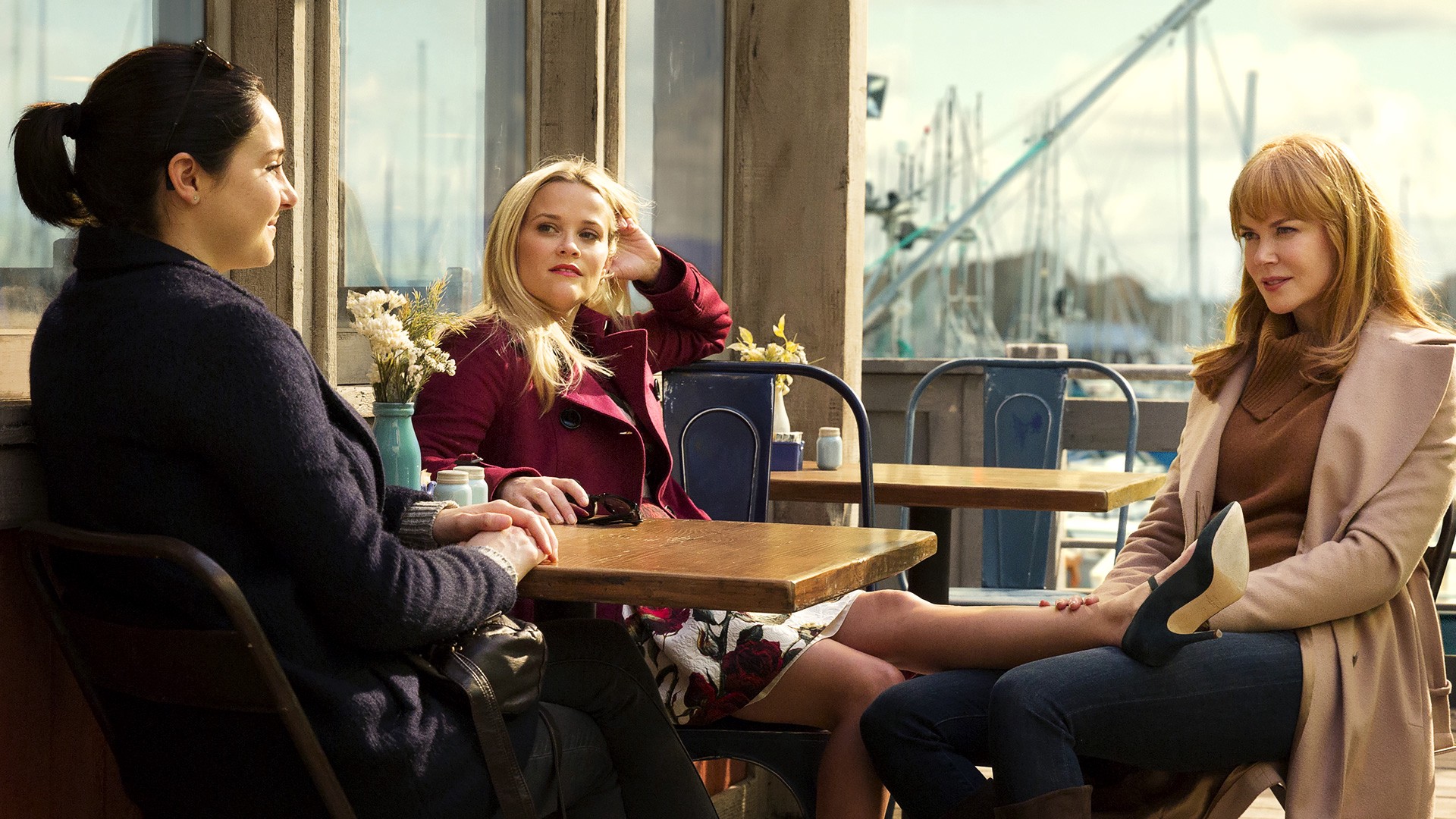
Big Little Lies opens with a crime scene. A school fundraising trivia night cheekily themed “Elvis and Audrey” has been marred by a tragedy. Police and ambulances are on the scene. Amidst bedazzled jumpsuits and Breakfast at Tiffany’s–lookalikes lies a body. Its identity is not revealed. Much as in Liane Moriarty’s novel of the same name, the recent David E. Kelley-penned and Jean-Marc Vallée-directed HBO miniseries is structured as a whodunnit, where the names of both the victim and culprit are left unspoiled, until the climactic final episode.
“It all goes back to the incident on orientation day,” we’re told by one of the witnesses being interviewed by the police. The incident at hand involves a young girl named Amabella (not Annabelle; it’s French, so her mother Renata, played by Laura Dern, says to everyone and no one in particular), who has been choked by one of her new classmates. Amabella points her accusatory finger to the newcomer in the area, Ziggy. His single mother Jane (Shailene Woodley) firmly believes that her sweet boy couldn’t have attacked anyone; he doesn’t lie. Gradually the school’s mothers take sides with one or the other. Madeline (Reese Witherspoon) — her young girl having taken a liking to Ziggy — stands by Jane, as does Celeste (Nicole Kidman), the mother of a pair of twins. The ensuing school politics end up having a ripple effect which, we’re led to believe, set the stage for the tragedy that strikes on trivia night.
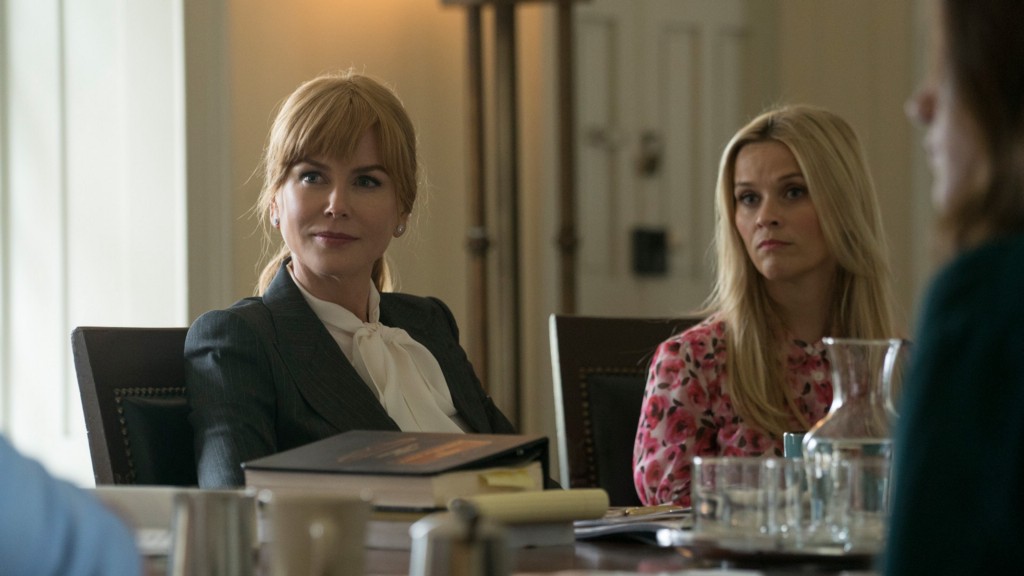
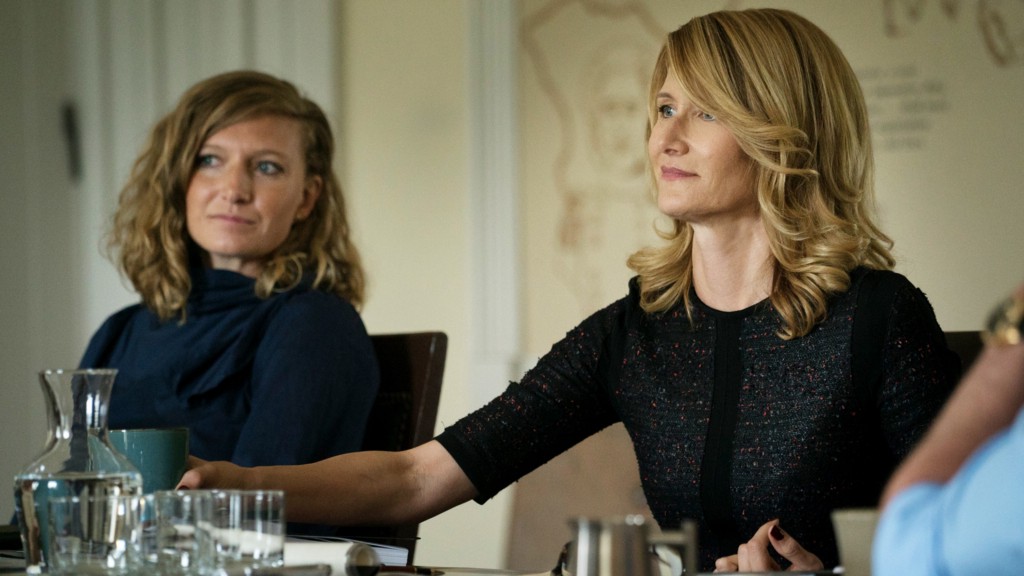
Despite its genre trappings, which might cause you to mistake Big Little Lies for a kind of chick-lit murder mystery, Moriarty’s novel instead belongs among a long list of works which look to domestic spaces in order to flesh out and interrogate women’s inner lives. Moriarty’s use of free indirect discourse throughout the book allows her to shuttle between her three main characters — Jane, Madeline, and Celeste — giving voice to their lives of, not just quiet, but silenced desperation. While the incident at the school immediately frames the concerns of the novel around issues of gendered violence, the more access we’re given to these particular women’s stories the clearer it becomes that the novel’s interests lie in examining how domestic abuse comes to mark day to day life. What is often shamed and silenced instead becomes visible through her prose.
Take for example an early passage, which gives us access to Celeste’s view on her marriage to the dashing and doting Perry. Behind closed doors, and in frequent fits of rage, her husband lashes out and hits her — something she has come to understand as a flaw in their relationship, rather than as an indicator of a case of domestic violence. The narrator asks:
“How could they admit to a stranger what went on in their marriage? The shame of it. The ugliness of their behavior. They were a fine-looking couple. People had been telling them that for years. They were admired and envied. They had all the privileges in the world. Overseas travel. A beautiful home. It was ungracious and ungrateful of them to behave the way they did.”
These insights crucially advance the larger themes of the novel, concerned as it is, as the title suggests, with the kind of white lies which get away from us when left unchecked.
These inner monologues are not so easy to translate to the screen. They seem to more readily lend themselves to that most hackneyed and maligned of filmic tools, the voiceover. After all, voiceovers allow the viewer to literally “hear” a character’s innermost thoughts, unmistakably spelling them out. One can imagine a scene in HBO’s miniseries where a close-up of Nicole Kidman as Celeste would lead to a hesitant voiceover narration, announcing how and why her moneyed and beautiful character feels so conflicted about her marriage to Perry (played by Alexander Skarsgård). Thankfully we’ve been spared such an approach. Kelley and Vallée instead find a variety of ways to visualize the inner lives of these women, nudging us to map, onto the quiet fleeting glances and evasive gazes, newfound insights about what might really be going on behind their seemingly mirthful lives.

In the show’s first episode, Jane, soon after meeting both Madeline and Celeste, voices this very thought. It comes even as she’s enjoying the impromptu welcome coffee date which has made her and her son’s move to Monterey feel like the right choice. “I look at you and you’re so beautiful and you guys are just right,” she tells her new friends. “And for some reason that makes me feel wrong. I know it’s crazy. I know I sound crazy.” While Madeline purports to have no idea what she’s talking about, Celeste catches her eye, a clear acknowledgment that she knows only too well what Jane is getting at. This tension — of precious appearances which hide deeper insecurities, at risk of being revealed if one only let one’s guard down — is also at the heart of Moriarty’s novel. When Madeline first describes Celeste to Jane in the book she says that she is tall, beautiful, and often flustered. Right on cue Jane asks, “What’s she got to be flustered about if she’s tall and beautiful?” — a question the novel takes upon itself to gradually unpack, by letting us see just what it is that haunts these women’s everyday thoughts.
The more she has to deal with Renata and the school’s administration, with regards to the threat that her sweet Ziggy presumably poses, the more time Jane spends jogging all around Monterey (the setting of the novel is the fictional Australian seaside town of Pirriwee). The activity both soothes and overwhelms her: with her headphones plugged in these are moments when she can tune everything out and try to focus on self care, except for the pesky images of the ill-fated and violent one night stand that begat Ziggy which keep swirling up through her mind. Prior to confiding in Madeline about her fear that the violent streak she experienced in Ziggy’s biological father might have been passed down to her son, these jogging montages keenly connect Jane’s motherly concerns with the trauma she herself experienced in that nondescript hotel room. Placing us in Jane’s headspace, the quick-cut montages (a hazy image of the hotel room joined to a nightmarish jump off a cliff; a view of her Ziggy sleeping soundly collapsed with a faceless and threatening man choking her), often ending with a shot of her stranded in a smudged party dress in the middle of the beach, conjure up Jane’s anxieties without ever needing to spell them out too tidily.
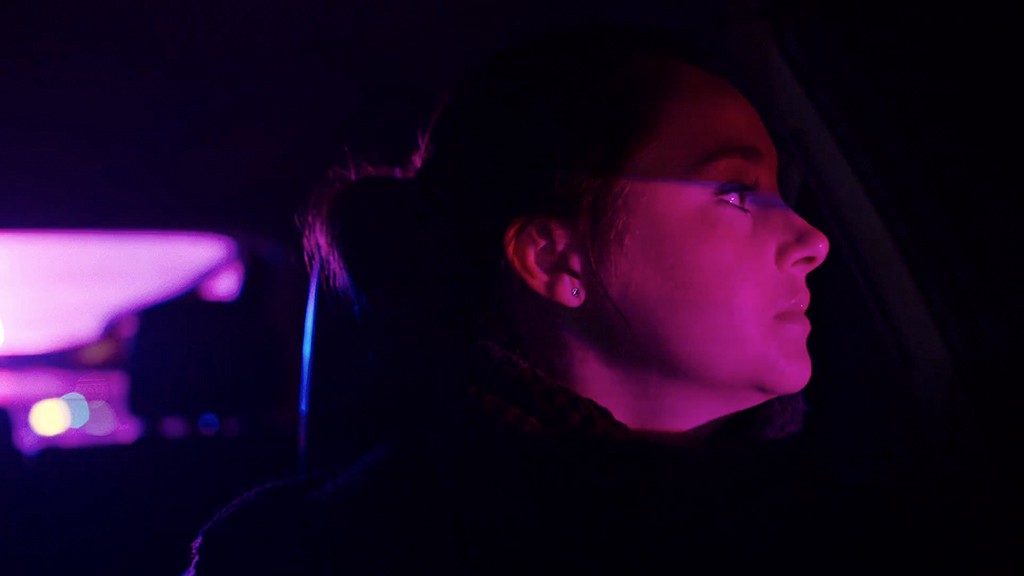
Vallée is aided by his self-aware use of contemporary music, featuring, among others, Frank Ocean, Sade, and Sufjan Stevens. Most often associated with Madeline’s daughter — the precocious Chloe (Darby Camp), who plays DJ at home and in her mom’s car — the tracks punctuate and explicate the world of the women living in sunny Monterey. After Madeline fights with her eldest daughter from a previous marriage, and the teenage girl elects to move in with her dad, Chloe gifts her mom a song which captures exactly how she should be feeling: “See, I’ve been having me a real hard time, but it feels so nice to know I’m gonna be alright,” the Alabama Shakes sing, as Madeline sheds a tear. Small moments like these add to the sense that Big Little Lies is relying on an entire televisual vocabulary, to capture what Moriarty’s prose did in far blunter terms.
Similarly, in the way the novel allows its reader ready access to its characters’ interior consciousness, perhaps the TV adaptation’s most thrilling take on the book is in the scenes of Kidman’s Celeste visiting her therapist, Dr. Amanda Reisman (Robin Weigert). In Moriarty’s novel Celeste can barely muster up the courage to ask Perry to try couple’s therapy. She instead visits the sterile office of a counselor herself, one whose expertise happens to be in victims of domestic violence. Celeste appears to find the situation laughable — the incongruousness of a beautiful happily married woman seeking help from someone whose specialty is with people who are actually being abused by their spouses. The visit nevertheless triggers thoughts that eventually lead Celeste to reassess what is wrong with their relationship — or what might in fact be wrong with Perry. Though little actually gets said at the session, we are made privy to the acrobatic mental tricks Celeste plays out as she carefully divulges glimpses of the violence which often leaves her bruised (though never, of course, on her face). As Moriarty writes,
“each time she didn’t leave, she gave [Perry] tacit permission to do it again. She knew this. She was an educated woman with choices, places to go, family and friends who would gather around, lawyers who would represent her. She could go back to work and support herself. She wasn’t frightened that he’d kill her if she tried to leave. She wasn’t frightened that he’d take her children away from her.”
That certainty begins to falter, however, the more she is urged to share about her life at home.
Keenly aware of how crucial those moments of self-reflection are for the character of Celeste, the TV adaptation opts to expand on the role of the therapist in the show. They are perhaps the most electric scenes in the entire series, a perfect setup in which to explore the real-life perils of openly voicing one’s inner thoughts and fears. Vallée alternates between long takes of Kidman and Weigert, as they square off in terse exchanges that bristle precisely for what is clearly being left unsaid. The decision to frame Kidman in a medium shot — particularly during her first visit to Dr. Reisman’s office, when she brings Perry along — allows us to track Celeste’s numerous reservations about what is being shared in this seemingly safe space. We can see her tense up when Perry alludes to the violence that defines his anger and their subsequent lovemaking. By the time she returns to Dr. Reisman alone, the shot highlights Perry’s absence in the same frame, reminding us of his power over every word choice and pithy anecdote Celeste gives herself permission to share.
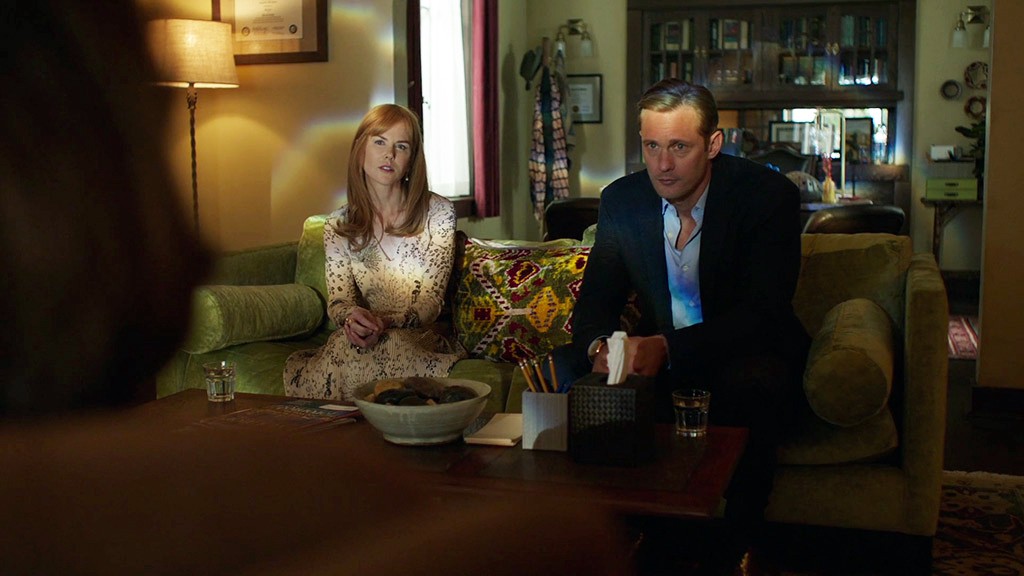


In those moments when Kidman tugs at her sleeves, unwittingly pulling attention to the bruises we know lie underneath, or half-decides to grab her handbag as if she were about to storm off, we glimpse the full range of Celeste’s inner conflict about opening up to Dr. Reisman. Every interaction becomes a minefield, and each reaction shot we get of Weigert ends up mirroring our own. More than just a meaty performance showcase for Kidman, these scenes achieve the well-meaning didacticism that Moriarty’s book espouses, teaching us how women’s shame about domestic abuse is so often apparent for anyone to read, if we only know what to look for.

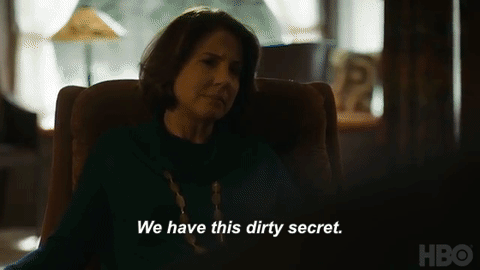
The climax of both versions of Big Little Lies is in the revealed identities of the murderer and the victim. But by the time we find out who, how, and why they died, it’s clear that the investigation has served more as a frame through which to study the lives of these women. Peppered throughout Moriarty’s novel and the HBO series are testimonies from those in attendance at the school’s trivia night, who spare no thought before speaking openly about the bickering between Renata and Jane, the explosive marriage of Celeste and Perry, and Madeline’s ongoing problems with her ex-husband and daughter. The gossipy tone of these interjections may setup a hokey structure, but they remain key in establishing Big Little Lies as a narrative about deconstructing façades and looking behind picture-perfect-looking lives. “None of us see things how they are,” a character nonchalantly explains to her husband at one point in the show. “We see things as we are.” Big Little Lies thrills because it doesn’t just show us its characters, it lets us see the world as they are.








